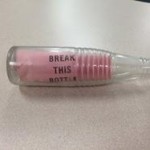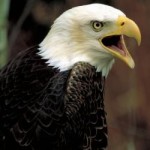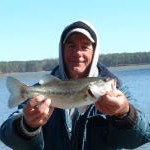Warming Yourself with A Fire
There is nothing quite like warming yourself with a wood fire. I have spent many hours standing or sitting around a campfire outside and have an insert in my house that does a good job keeping the whole house warm. Both require work, but some of that is fun, too.
An open fire in camp this time of year is a mixed blessing. The smell of wood burning always warms me, even when I am far from the fire. Often when fishing I will smell a fire at a cabin and the smoky smell gives me a good feeling no matter how cold I am.
Gathering sticks and bigger wood for a camp fire is a pain but not too bad. Most fuel can be easily found in the woods and dragged or carried to the fire pit. Breaking up small limbs by hand and chopping bigger stuff with an ax is more pleasing, but not nearly as fast, as with a chain saw. But I hate to disturb the peace and quiet in the woods with my saw.
When the fire is going good on a really cold day you can stand or sit by it and get nice and toasty – on one side. The side away from the fire will still be freezing cold. That is why rotating the side of your body facing the fire ever few minutes is standard.
I really enjoy cutting wood, at least parts of it. I like using my chain saw to cut down trees and then cut them up into useable lengths, but picking up big pieces, loading them on the truck and then unloading them is back-breaking work.
It is said firewood will warm you seven times. When you cut it, load it, unload it, split it, stack it, carry it to the fire and while burning. In fact I am often sweating on freezing cold days while loading the truck. That is the hardest part of it all to me.
I have some great memories of fires but my favorite is a fire I never saw. One cold December morning just after daylight while fishing a tournament at Jackson I was in a small cove. It was foggy with wisps of gray tentacles curling around the cabins and trees on the bank. The only sound at first was the gentle lapping of water against my boat.
About the time I smelled wood smoke and felt the warm glow from it someone on the bank started playing a haunting, slow blues song. It was soft and gentle. I have tried to find that song but never knew the name or artists. I still get a flood of warm feelings from the memories of the sound, smell and sights of that morning.
The big fire at deer camp always brings back great memories. For years we kept a big cast iron caldron hanging over the fire, keeping water hot for dish washing and other chores. That fire burned from the beginning of camp until the end. We never let it go out.
The stories told around that fire at night and the anticipation felt around it as we prepared to go to our deer stands in the dark of early morning added to the mystic of the fire. And the boiled peanuts that simmered in the big pot and were always great.
Campfires were a staple of backyard camping and camps in the woods when I was growing up. We were good boy scouts and always tried to start the fire with flint and steel or rubbing sticks together, but never went without matches as a backup. And we always had to use them.
Cooking food on an open fire is always an interesting experience. From bacon burned on one end and almost raw on the other to scrambled eggs that are full of ashes, nothing tastes so good. And a bird or squirrel roasted over the fire is a delicacy even if tough and chewy!
Another great fire memory was with my mother. We put a trotline across a cove at Clarks Hill then, just as it got dark, started a small campfire on a sandbar near it. After baiting our rod and reels with chicken liver and setting them up in forked sticks, we sat on the ground by that fire and talked for hours.
I was a freshman in college at the time and it was one of the first times my mother had talked to me like I was a man rather than her kid. I don’t remember catching any fish but I do remember sitting there with her and talking.
This is a great time to have a campfire or to keep your house warm with a fire. The work can be hard but well worth it. And both will make great memories.


